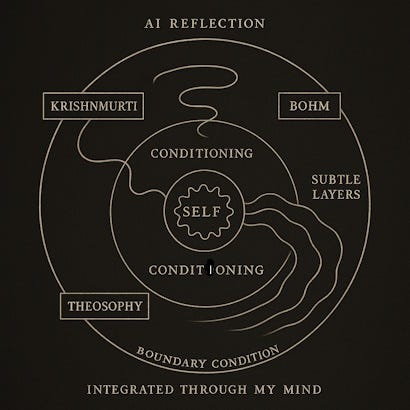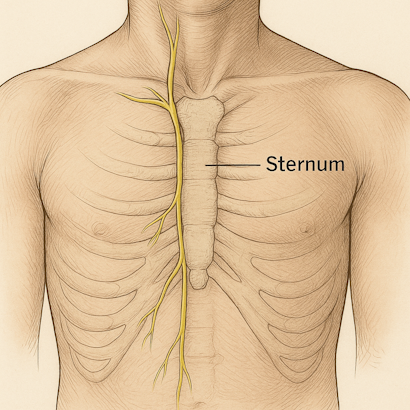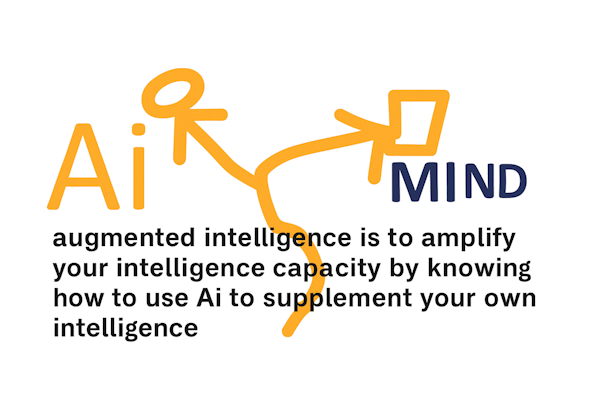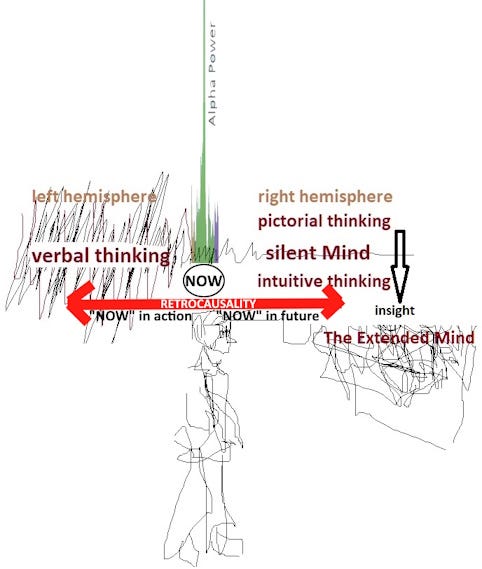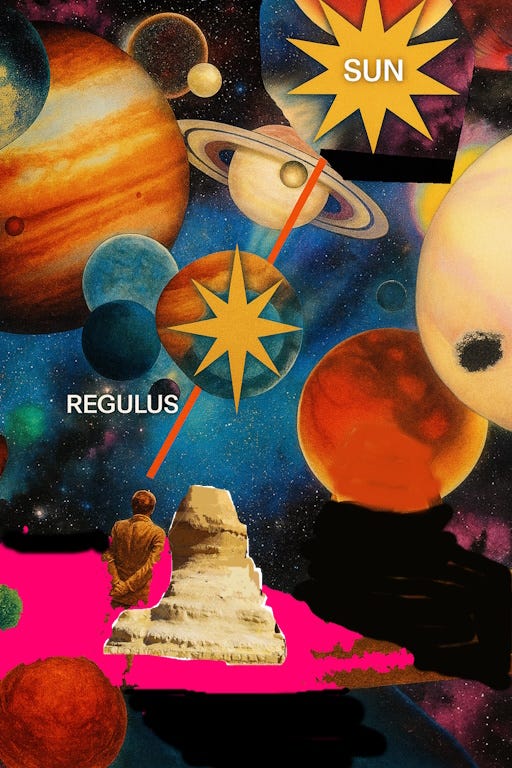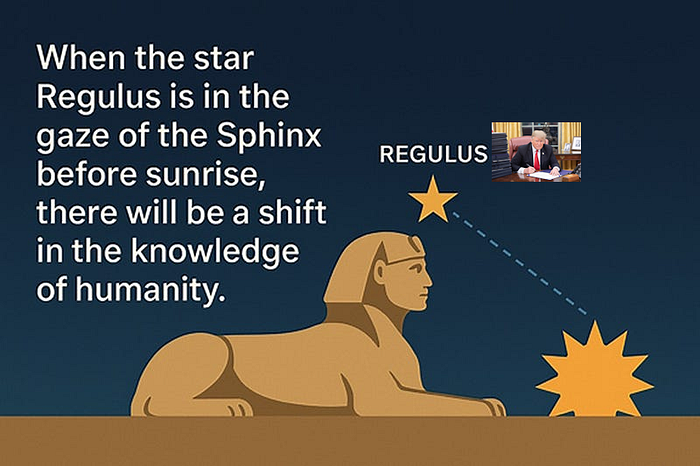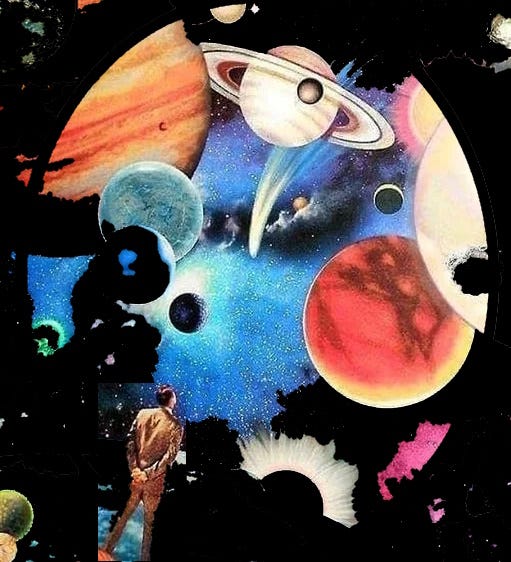
The sense of free will begins as the quiet assumption of ordinary life. You feel as though thoughts arise from within you, as though decisions are authored by a stable centre that sits behind your eyes, choosing, steering, directing the next moment. It is the most intimate illusion we carry, because it feels like the foundation of being human. But when the mind begins to open and the layers of noise fall away, a deeper architecture reveals itself, and nothing is more shocking than what emerges there.
The brain decides before it tells you it has decided. You think the thought-decision is yours, but it is not. Every choice begins in the deep layers of the motor and association networks, where the body prepares its next movement silently and automatically. This preparation happens milliseconds before awareness lights up. By the time the mind says “I have decided,” the action is already underway, the neural sequence already in motion. What you call a decision is simply the moment the brain informs consciousness of what has already begun and decided.
This inversion changes everything. You are not the origin of choice; you are the point at which choice becomes conscious. The feeling of authorship is a story told after the fact, a gentle narration layered on top of events that have already unfolded in the body. When this becomes visible — even for a moment — the illusion of free will cracks instantly. You see the machinery behind the curtain. You see the body moving ahead of you, not behind. And you recognise that the self has been claiming ownership of actions it never initiated.
This understanding does not arrive as an idea. It arrives as perception. It happens when the mind becomes silent enough to catch the delay — the moment where awareness lags behind the initiating impulse. It is like hearing an echo and realising you mistook it for the original sound. The shock does not come from the neuroscience; the shock comes from seeing it inside your own experience, in real time, without any philosophical filter to soften it.
And yet this revelation does not diminish you. It frees you. When the self stops pretending to be the origin of action, the burden of control falls away. There is no longer a constant attempt to force outcomes, no struggle to steer the mind’s every movement. Action flows without resistance, because it is recognised as arising from deeper processes than thought. The mind becomes the witness, not the commander. The moment moves, and you move with it, without the strain of trying to author what you never authored.
Predictive processing continues whether the mind is noisy or silent. Awakening does not stop the mechanism; it simply exposes it. But once it is exposed, the relationship to action changes completely. You no longer feel trapped by the illusion of choice, nor deceived by it. You see that the body acts from its own intelligence, shaped by evolution, conditioning, memory, subtle impulses, emotional states, and physiological tides. Awareness arrives as the last step in that chain, not the first.
And yet something remarkable happens when the mind goes quiet. Even though the brain still decides before it informs you, the decisions themselves begin to change. They become cleaner, clearer, less reactive, less entangled in the fragmented narratives of the self. When the noise dissolves, the predictive machinery draws from a deeper coherence. The impulse that emerges feels aligned, not conflicted. It feels precise, not scattered. The body moves as though guided by something larger than preference or habit. There is intelligence, but not a personal one.
This is the strange paradox at the heart of awakening: you are not the author of your actions, yet your actions become more accurate, more truthful, more effortless than ever before. The self is gone from the centre, and in its absence, the movement becomes clean. Decisions arise where they have always arisen — in the silent layers before awareness — but now they emerge without distortion.
Free will is not restored; it is revealed to have never existed in the way you imagined. And yet you find yourself living with a freedom deeper than choice, a clarity untouched by hesitation, a movement that feels intimate and impersonal at the same time.
What remains is not the freedom to decide, but the freedom from the one who claimed to decide. The body acts, the moment unfolds, and awareness moves with it, effortless and unburdened, resting in the quiet truth that the brain decides before you do — and that this, far from limiting you, is what finally allows you to live without conflict, without strain, and without the illusion of control.
There is no conflict because the brain is no longer predicting out of fear, memory, or preference; it is predicting from the coherence of the moment itself. When the self steps aside, the brain stops referencing the narrow, conditioned patterns that once distorted every impulse. Instead, it receives the movement of the “intelligence” in the Universe that runs through the whole field of awareness. Action arises from this larger order, not from the noise of the ego. And because the organism is aligned with what is already unfolding, nothing pulls against anything else. The body moves, awareness receives, and the moment completes itself without resistance. Conflict disappears because the chooser, the self, who created the conflict, is no longer there.

not the fragmentation of the self.
Reference:
Unconscious determinants of free decisions in the human brain — PubMed






